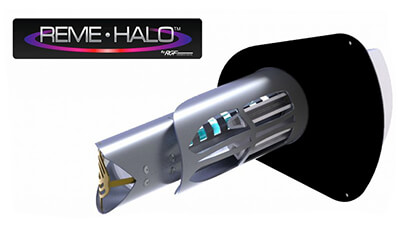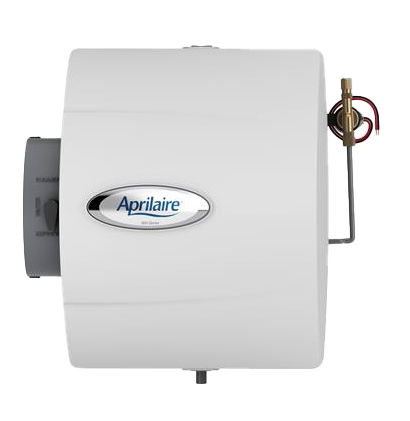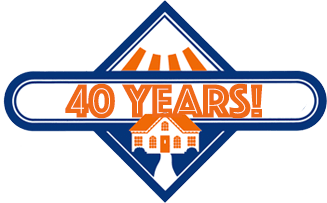What Is IAQ and its Impact on Health in Your Home?
 Indoor air quality, or IAQ, is not a new concept. In fact, studies on the quality of indoor air have been ongoing since the 1960s and ‘70s, beginning with concerns centered on radon and tobacco smoke. Since then, the amount of research and focus given to IAQ has increased steadily, and now we have a much better understanding of how our indoor air quality affects our quality of life.
Indoor air quality, or IAQ, is not a new concept. In fact, studies on the quality of indoor air have been ongoing since the 1960s and ‘70s, beginning with concerns centered on radon and tobacco smoke. Since then, the amount of research and focus given to IAQ has increased steadily, and now we have a much better understanding of how our indoor air quality affects our quality of life.
IAQ is best understood as the quality of the air inside a building or structure (such as your home) and the relationship between that quality and your health and comfort. By better understanding how poor indoor air quality occurs, its makeup, what factors contribute to it, and what we can do to improve it, we can help mitigate many negative health effects associated with less-than-ideal indoor air quality.
A Brief History of IAQ
While the quality of indoor air has been affecting health ever since mankind first started living inside structures (ie. early man burning fires inside a cave), our understanding of and research into IAQ is a relatively recent endeavor. The terms ‘indoor air quality’ and its popular abbreviation ‘IAQ’ have been used increasingly to discuss residential and commercial indoor air quality issues and concerns for at least the past 40 years, with growing use in the residential market in the past couple of decades. Interestingly, what first started out as identifying how the outside environment affected our indoor air soon shifted emphasis into understanding the factors that cause poor IAQ from within the structure, such as ventilation and humidity, and just as important, how a wide range of common daily activities contribute to poor IAQ. Regardless of the presence of wildfires in the area or health issues such as COVID-19, as we spend plenty of time indoors at different times of the year (most estimates suggest we spend up to 90% of our lives indoors), indoor air quality in your home is an important issue worth giving priority and in-depth attention.

Sources of IAQ Concerns
What do allergies, asthma, the flu, a variety of moderate and serious lung issues, frizzy hair, and furniture & upholstery deterioration all have in common? Each of these can be triggered or impacted by our home’s IAQ. Indoor air quality effects much of our indoor world, and is one of the most important aspects of ensuring that our homes are safe, healthy havens well-suited for our comfort.
Where Does Poor IAQ Come From?
There are a wide range of airborne pollutants that can be introduced into and circulated throughout our homes, and many of them are created right under our noses. One of the primary culprits is volatile organic compounds, or ‘VOCs,’ which are organic chemicals that are created as a result of daily habits such cooking and cleaning, and many other household products and activities, as well. VOCs are gases that can cause both short and long-term negative health effects, and are emitted by household staples such as paint and stains, cleaning and laundry products, printer ink, furniture and floor polish, air fresheners, cigarettes, and perfume, to name just a few. In addition to VOCs, dust, mold, bacteria, and viruses are other airborne and surface pollutants that reduce the quality of your indoor air. The good news is that the vast majority of these sources have been identified and are treatable using modern IAQ knowledge and technology.
Common indoor air pollutants that impact your IAQ include:
- VOCs and other airborne chemicals
- Dust
- Molds and pollen
- Animal dander
- Bacteria and viruses
- Gases from cooking and heating
- Odors
- Smoking products
- Pesticides
- Radon gas, naturally occurring in our environment, posing potential risks in enclosed spaces
- Formaldehyde outgassing from construction materials and other household products
- Carbon monoxide and other combustion gases from heating, cooking, vehicles, and other fossil fuel-burning appliances
- Lead and asbestos from certain metal products and construction materials
If you’d like to learn more about exactly what’s in your home’s air, there are specialty contractors and testing labs available who provide these sorts of detailed analyses without any product sales agendas. Unlike your home’s water, for example, there’s a great many indoor air pollutants that virtually all homes have in common, so the result typically ends up focusing on the same types of solutions. But it never hurts to learn more, if it provides you greater peace of mind!
What Factors Make My IAQ Better or Worse?
Now that we know the most common substances and byproducts that contribute to poor IAQ, how do we go about improving it? That starts with an understanding of the factors that contribute to developing poor indoor air quality. Humidity can be a big factor, as having excess moisture in your indoor air can create more suitable conditions for the growth of bacteria and viruses. Of course, that’s generally not an issue for homeowners in the Denver-Boulder area, with our mostly arid climate, but there are certainly times of year and household locations (bathrooms, for example) where excessive humidity can rear its head.
 Another major factor—especially on the Front Range where we keep our windows closed thru most of the winter—is adequate ventilation of ‘contaminated’ inside air to the outdoors. For many decades, national and local code have addressed proper ventilation practices during the new construction process, avoiding a number of potential IAQ issues on the front end. Radon venting systems, for example, are now commonplace in many new homes, depending on the location. But these contruction practices are just the tip of the iceberg when it comes to ensuring good indoor air quality. There are so many different factors influencing our home’s IAQ.
Another major factor—especially on the Front Range where we keep our windows closed thru most of the winter—is adequate ventilation of ‘contaminated’ inside air to the outdoors. For many decades, national and local code have addressed proper ventilation practices during the new construction process, avoiding a number of potential IAQ issues on the front end. Radon venting systems, for example, are now commonplace in many new homes, depending on the location. But these contruction practices are just the tip of the iceberg when it comes to ensuring good indoor air quality. There are so many different factors influencing our home’s IAQ.
Other common factors impacting your IAQ include how often and thoroughly you clean your home, the types of flooring and furniture materials, construction materials and insulation used when your home was built, age of the home, pets, pests and insects, home hobbies, personal care products and practices, smoking habits, the nature of your heating system, the effectiveness of your furnace filter (assuming you have forced air heat), remodels (if in progress or recently completed), and outdoor pollution sources entering your home. We’re sure you can appreciate the broad scope of potential indoor IAQ issues.
IAQ Solutions
Many of the components and sources of indoor air pollution can be significantly mitigated through the application of the right IAQ solutions.
For Homes With A Ducting System
 For homes that have a forced air furnace or another type of centrally ducted heating system a range of proven, effective products are available to help improve the air quality in your home. Whole-home humidifiers are often a great fit for homes in our area, along with high performance, high efficiency furnace filters. To address a wide variety of VOCs, airborne and surface viruses and bacteria, advanced central air purifiers can also be added to your furnace system.
For homes that have a forced air furnace or another type of centrally ducted heating system a range of proven, effective products are available to help improve the air quality in your home. Whole-home humidifiers are often a great fit for homes in our area, along with high performance, high efficiency furnace filters. To address a wide variety of VOCs, airborne and surface viruses and bacteria, advanced central air purifiers can also be added to your furnace system.
Regarding specialty fresh air ventilation products such as heat recovery and energy recovery ventilators (HRVs and ERVs), and makeup air products, all of which are great in theory, in our Front Range climate great care must be taken in choosing a product that’s the right fit for your needs and your home, one that’s not going to create new issues while it tries to solve others. In the right application, one of these products may also be a good IAQ solution.
Homes With Hot Water Heat
For homes heated by a hot water boiler or another type of non-ducted system, you can find plentiful information and product options online and in local retail outlets, focusing on portable humidifiers and air cleaners. It may be worth rolling the dice and investing in one or two highly rated products to treat specific rooms in your home, but that’s not a limb we’re going to venture very far out on. Maintenance on many of these units may be needed frequently in order to maintain performance, and coverage areas are typically limited to a single room. On the ‘greener’ front, increasing your number of houseplants can help in many ways. On rare occasion, our team has been known to install an independent, scaled-down ducting system with its own air handler, incorporating IAQ products dedicated solely to humidifying, filtering, and purifying the air in a home that doesn’t have a furnace.




Expert IAQ Advice in Denver-Boulder
 As each combination of home and family is unique, having a resource with the expertise to recommend products that are best suited for your specific IAQ needs will undoubtedly obtain the best results. In the Denver-Boulder metro area, you can turn to Save Home Heat Company with confidence that you will be receiving highly experienced, professional advice and recommendations for all your IAQ needs – in an informative, low-pressure process that you will appreciate. Please reach out to our team today to learn more about IAQ products that make sense for your home and your needs.
As each combination of home and family is unique, having a resource with the expertise to recommend products that are best suited for your specific IAQ needs will undoubtedly obtain the best results. In the Denver-Boulder metro area, you can turn to Save Home Heat Company with confidence that you will be receiving highly experienced, professional advice and recommendations for all your IAQ needs – in an informative, low-pressure process that you will appreciate. Please reach out to our team today to learn more about IAQ products that make sense for your home and your needs.
Please contact me to discuss IAQ solutions for my home!
Tags: Green Living, IAQ, Indoor Air Quality



